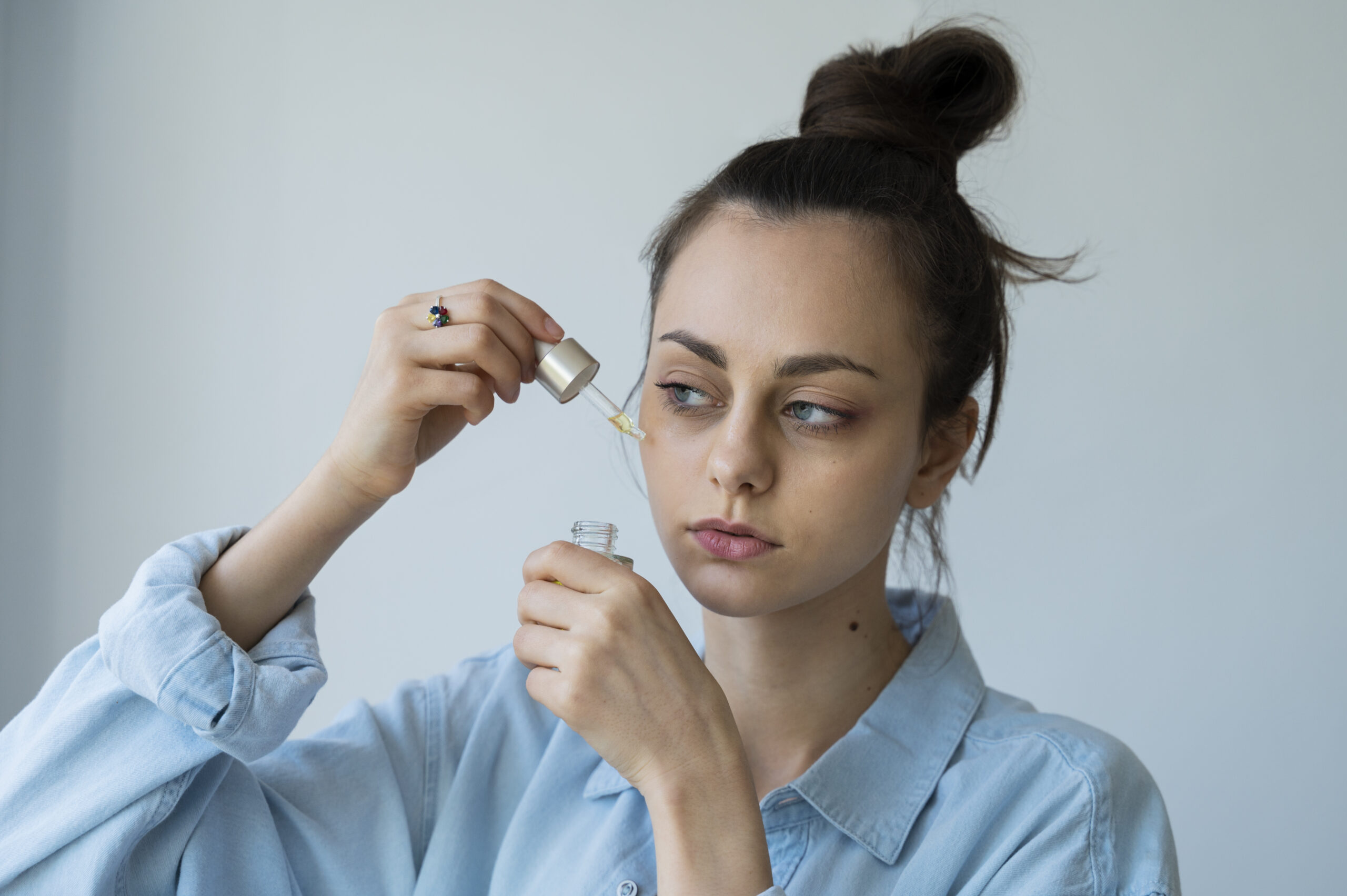Hyaluronic acid has become a very popular skincare ingredient because of its promises of hydration, anti-ageing, and even protection. Hyaluronic acid is hailed as the final moisture powerhouse and has a place in literally millions of boardrooms with all parts of the face, neck, and shoulders. The dilemma that is still asked by many people, though, is whether to apply hyaluronic acid in the morning or in the evening. The response is not exactly black-and-white since the product can be applied efficiently at both hours, yet comprehending its mechanism and seeing what your skin requires may guide you through the method to use at a particular time.
The mechanism of action of Hyaluronic Acid
Hyaluronic acid is not really an acid, as compared to acidic ones such as glycolic acid and salicylic acid. Rather, it is a humectant, which means it draws water to itself. In terms of skincare, this means directing more water into the skin and helping keep it inside, leaving the skin with a fuller, smoother, and refreshed appearance. It is naturally occurring in the skin, but its levels decline with age, resulting in dryness and the appearance of fine lines. That is why its topical use became such an effective method of keeping the skin healthy and hydrated.
Why Morning Application is Effective
When you think about using hyaluronic during the morning or at night, you should consider what the skin experiences in order to understand whether it is necessary to use hyaluronic or not. The daytime is a period when your skin gets ready to deal with the outside environment, such as sunshine, non-ozone pollution, and air conditioning. You can use hyaluronic acid as a perfect technique to hydrate your skin before leaving home. When not used on dry skin, it seals in the moisture on the face, thereby giving it a fresh, dewy look. Apply as the last step in your skincare and layer it with moisturiser and sunscreen to keep your skin hydrated even during the day when exposed to dry environments or other harsh environmental factors. Plumping can also smooth out your skin, which means your makeup (should you use any) will be better. In case the skin is oily, hyaluronic acid is likely to provide excellent results without worrying about the surplus weight associated with thick creams that leave the skin feeling oily.
Why Night Application is important
At night, things are a bit different. You have the strongest potential to repair your skin at night when you sleep. It is at this time that there is an increase in cell turnover, and your skin works hard to eliminate the effects of daily damage. Using hyaluronic acid at night can help your skin through this healing by ensuring your skin maintains moisture throughout. With a moisturised skin barrier, better chances of self-healing as well as the ability to absorb other components within the nighttime regimen, i.e., ones that contain retinol or peptides. Some individuals report that using hyaluronic acid in combination with a more luxurious night cream makes the skin softer and stronger after they wake up.
Combinations with Other Things
It is also important to point out that applying hyaluronic acid at night will negate some of the drying properties of more intense active ingredients. As an example, retinol is the most powerful anti-ageing ingredient, yet it can be a source of irritation and dryness, particularly when introduced. With the addition of hyaluronic acid components beneath the skin or even the addition of retinol, you will moderate these side effects and make the procedure more bearable without compromising on the outcome. In this regard, hyaluronic acid acts almost as a support layer to other products.
Which is better, Morning or Night?
So, which is best or morning or night? The fact of the matter is that you do not need to pick one at the expense of the other. Hyaluronic acid can be used most of the time because it is gentle and versatile. Most dermatologists prescribe its use in the morning and also at night, as the hydration must be locked in with a moisturiser. The trick is in consistency and applying it properly. As hyaluronic acid requires water in order to work, it is more effective to apply it to slightly wet skin compared to applying it to dry skin. It could dehydrate deeper layers of your skin, as it lacks moisture when you do not use enough of it. Applying a moisturiser then will seal the moisture to prevent evaporation.
Customised To Your Lifestyle
People all have different skin, and the manner of adding hyaluronic acid to your routine would change according to your needs and lifestyle. Drinking it in the morning will keep you hydrated, especially when you spend a considerable amount of time in a chilled interior or outdoors. Do you find your skin is quite dry or tight after waking up? Then you may find it more helpful to incorporate it into your nightly routine. Many people are fine using it twice per day, but you do not need to use it that often unless your morning and evening routines cannot fit in any other active ingredient.
The Place of Climate and Environment
The next aspect that you should consider is the weather conditions under which you live. In high-humidity settings, hyaluronic acid already contains more water in the air to tap into; its high effectiveness is thereby all the greater. In the very arid climates, however, you must take great care to apply it correctly and constantly seal it afterwards with a cream or lotion. Otherwise, it may have a contrary effect. That is why the other products you apply to your skin along with hyaluronic acid also matter as much as the actual serum itself.
Hammering that impact to be made over a long run makes use of consistency, and consistent use is beneficial.
As long-term effects, daily applications of hyaluronic acid determine the retention of the elasticity of the skin, making signs of fine lines less apparent and gaining a more youthful overall appearance. It neither scrubs nor actively induces the production of collagen, and all it does is provide moisturizing conditions under which those natural processes take place. Hypertonic skin appears healthier and reflects the condition softly; it glows and reflects the ease with which it is able to resist damage.
The last Word
In summary, hyaluronic acid is a very flexible and user-friendly skincare ingredient. You can use it in the morning to keep your skin hydrated and shielded throughout your day and in the evenings to boost the rest of your active ingredients and encourage the process of healing. The optimum second step is to remember that it does not have to be either morning or evening and think of it as a flexible tool to work around your personal lifestyle and skin type. Apply it just once or twice daily, and the key aspect is to apply it properly and regularly and, of course, to combine it with an excellent moisturiser and, in the daytime, a sunscreen. That is how you can ruthlessly leverage its capabilities to moisturise, nourish, and fortify skin through all the phases of your regimen.





